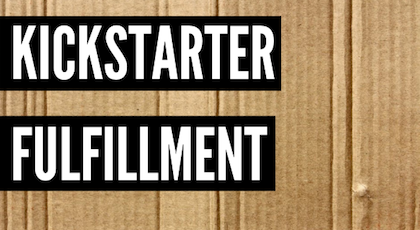This article is sponsored by the Modarri Kickstarter campaign: The toy car re-invented. Finger-powered street, dirt & track cars with real steering, suspension & performance + hex tool to swap parts & create hybrids.

If you are running or thinking of running a Kickstarter, Indiegogo, or other type of crowdfunding campaign, I urge you to check out Meetup.com to find some local events in your area where you can learn from other campaign creators and network with people who are going through the same fundraising process.
Two weeks ago, I attended the Kickstarter, Indiegogo and Crowdfunding Meetup in Cambridge, Massachusetts. There were awesome speaker, Elan Amram. Eli is the cofounder of Videogogo, a full-service marketing agency based in Denver, CO, and has successfully helped raise $183,000 on Kickstarter. Elan is the founder of ShmoozBiz, a Social Community to Discuss and Learn about Crowd Funding.
David Iaituri, who has raised $194,682 on Kickstarter, was also there and provided some great insight into raising money on the platform.
When just starting out, many campaign creators have similar questions about raising money from the crowd. Elan and David did an awesome job answering some of these questions and outlining the common mistakes that first-time campaigners make. I’ve included some distilled tips below.
1. Don’t Expect People To “Discover” You.
Raising money on Kickstarter or Indiegogo to the early days of the web, where people expected that if they threw up an ecommerce web page, thousands if not millions of people would find their page (what else do they have to do with their lives?) and they’d become a millionaire in a matter of months.
The fact is that you must drive your own traffic to your crowdfunding campaign to see results. No one wants to be the first one to the school dance. Get your friends and family to commit to pledging throughout the first week to build momentum and add social proof to your project.
“Unless you’re Bill Gates that has a network of people that will write you checks of $50,000 a pop, you really need mainstream PR. You really need to get the blogosphere excited about what it is that you’re doing”
2. Build a Team BEFORE Launching Your Project
In order to be successful on Kickstarter, you need the following key skills: campaign management, social media, video editing/production, design ability, copywriting skills, and marketing/PR. You may have all of these or only one. Either way, your time is finite and building a team around your project can help increase the chances of fundraising success.
3. Build a Community Around Your Project
Some campaigns may seem to act like a pre-order system, but rather than seeing the relationship between your backers and your campaign team as transactional, try to see it as a collaborative process where you and your audience are involved in the co-creation of a new product.
In a very short span of time, you can attract a group of people who are interested in you, your product, and your mission. Rather than focusing purely on the financial aspect, strive to build a community around your project with constant updates, comment responses, and compelling reward tiers.
Dave, who raised $194,682 on Kickstarter, underscored how he went to extra lengths to involve backers in his project, from posting images of the orders being shipped out, to naming product parts after his early supporters. He likened running a successful Kickstarter campaign to how restaurant goers love to watch Japanese Hibatchi chefs cook. The food and atmosphere must be worth the money spent, but it’s also about seeing a performance.
Based on an informal survey that Dave collected, he concluded that overwhelming reason why people pledge for campaigns is that backers either like your product or want to back an inventor. They did not care as much about “getting something for cheap.”
4. Hit the Ground Running
According to Eli, you should aim raise at least 24%-33% of your fundraising goal in your first week. You really need to work hard in this early period to generate buzz that will pay off in the middle of the campaign to avoid the fundraising slump, where the initial excitement is over and the clock isn’t down so much that there is a sense of urgency.
Eli went on to say that each member of the campaign team should aim to convert a minimum of 1% of their social network at an average pledge of $50.
5. Understand The Metrics
Ideally, the video should be between 2-3 minutes for most crowdfunding campaigns and 4-5 minutes if you have an especially complex project.
According to Dave, of the people he drove to the campaign, 5 percent ended up watching the video and of those who watched the video, 5% ended up pledging. He worked it out to be that it took about 400 people to generate one pledge.
Don’t forget the sales funnel approach we talked about in our previous articles.
Want more info?
Check out the meetup’s youtube video. Anton Volney also did a great interview of Eli on SucceedInYourPajamas. Finally, you can subscribe to CrowdCrux to stay up to date on crowdfunding tips.




